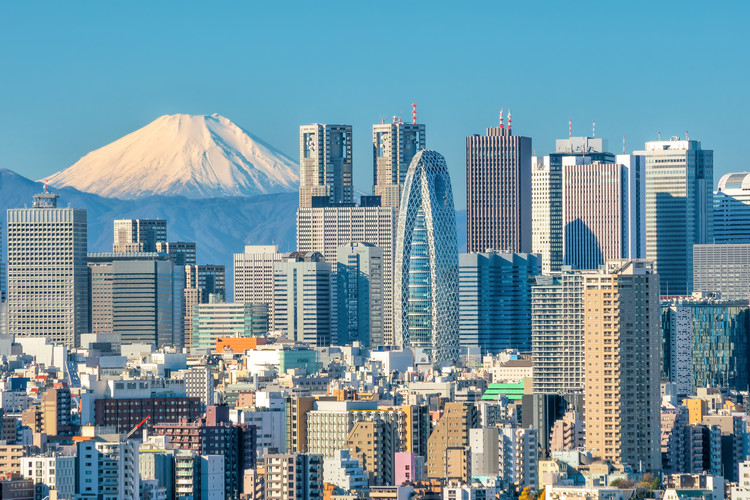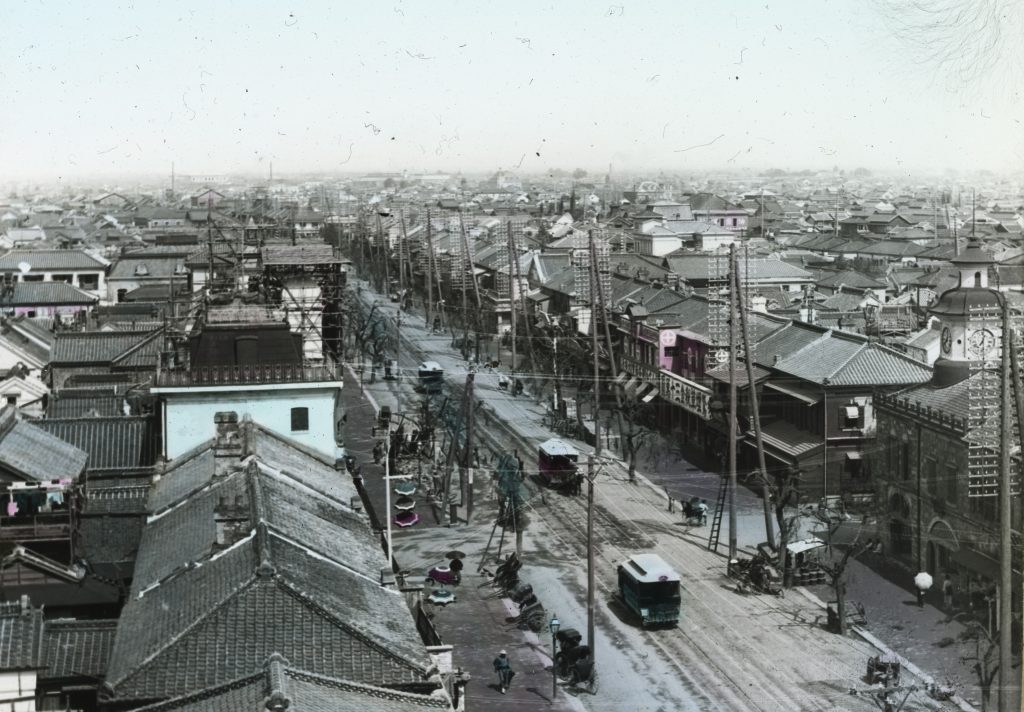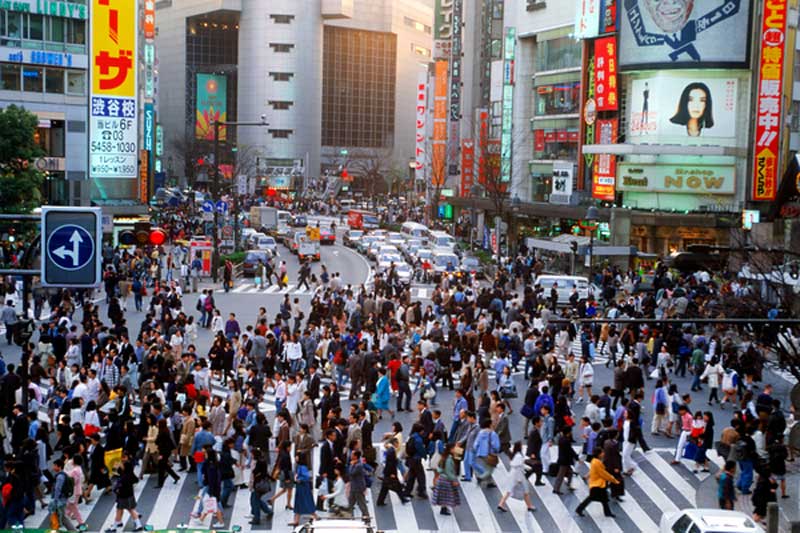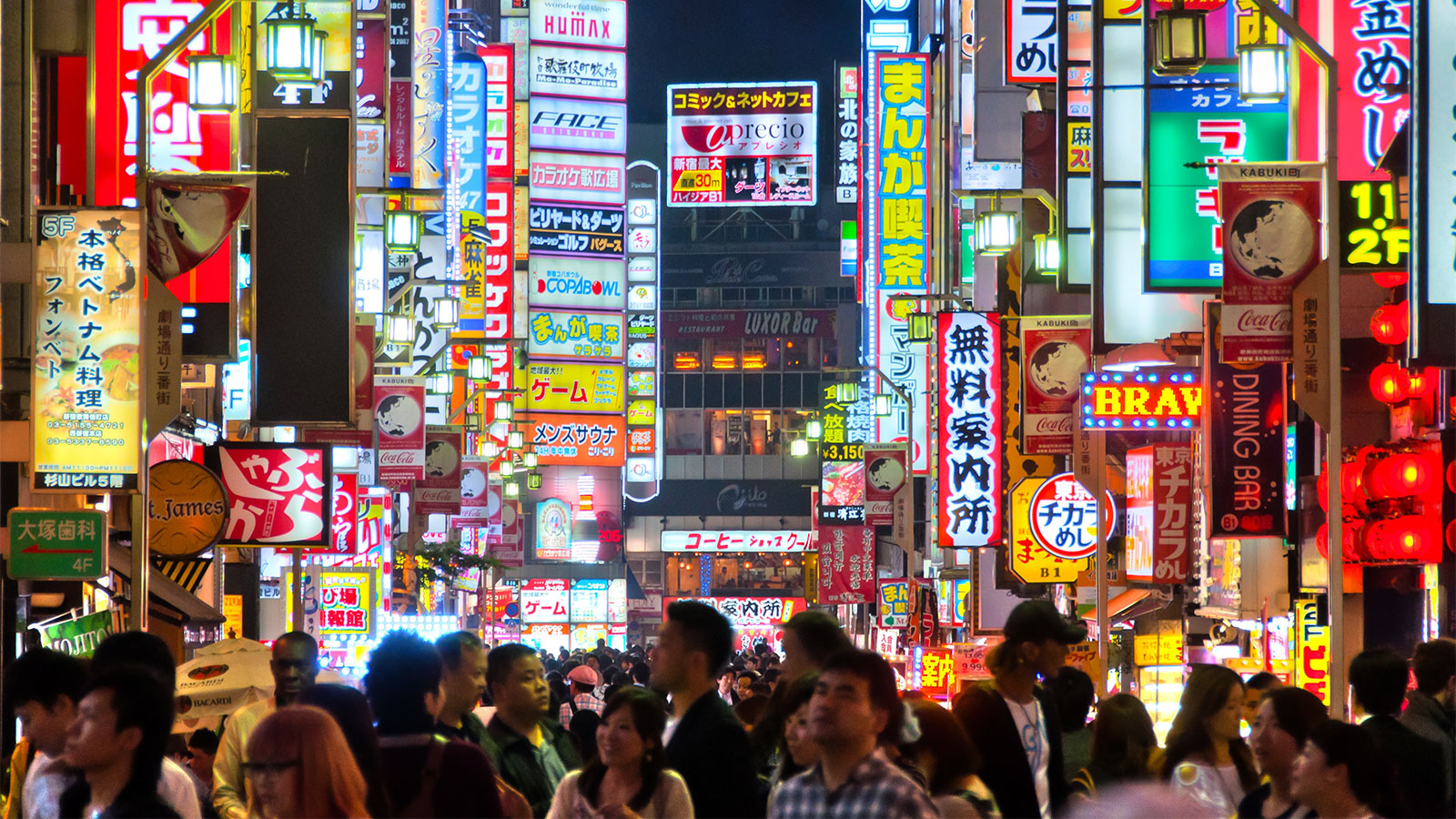The population is one of the major factors that determine the future of a city. The residents of a city play a major role in making the city a desirable place to live. They can strive hard to give their city a perfect look, a great culture, fantastic tourism, and much more.
Therefore, the number of people living in a city is a critical matter. If the residents are too many or too few, it might become difficult for a city or any other place to become prosperous. The reason behind the same is that both high population and low population are detrimental to the growth of a city. When the number of residents is in a fair proportion to the area, a city reaches its maximum potential in terms of economic stability, employment ratio, education, and so on.
However, it’s easy to come across some exceptions in this world. There are some cities and other regions that have made a distinct identity for themselves despite having extremely high populations or extremely low populations. They are known in the world not just for their population count but also for their achievements.
One such city is Tokyo, a place that does not need any introduction. It is regarded as one of the most populated city in the world. To be accurate, Tokyo is not a city but a prefecture in Japan. The country of Japan has 47 prefectures which form the country’s first level of jurisdiction. They are governed by an appointed prefect. The 47 prefectures of Japan include 43 prefectures proper, two urban prefectures, one ‘circuit’ and one ‘metropolis’. These prefectures can be further divided geographically into nine regions. The Japanese word for a prefecture is ‘Ken’.
Tokyo: Basic Introduction and Population Count
Tokyo is the largest prefecture in the country of Japan. A prefecture cannot be considered similar to a city because it is larger than a typical city and contains several regions. These regions, which are officially known as ‘wards’ can be considered similar to cities. Tokyo has 23 wards, some of which are remote islands. It contains 62 municipalities.
But still, when it comes to finding out ‘which is the most populated city in the world?’, the answer is ‘Tokyo’. The prefecture of Tokyo is also sometimes called ‘Tokyo to’, which translates to ‘Tokyo Metropolis’ in English. Other names used to refer to Tokyo are ‘Tokyo Metropolitan Area’, ‘Greater Tokyo’, and ‘Greater Tokyo Area’. If you remember, we have mentioned in this blog post that one of the 47 prefectures is a metropolis. This metropolis is none other than Tokyo Metropolis.
However, the fact that Tokyo is a city, a prefecture, or a metropolis often becomes the topic of debates and discussions both online and offline. The same is the case with the fact that Tokyo is the capital of Japan or not. We will learn more about it in one of the later sections. But before that, let’s see what the population of Tokyo is. The estimated population of Tokyo in 2022 is 37.7 million. The area of Tokyo is 2191 square kilometers.

Tokyo and Japan: Some Interesting Statistical Data
Tokyo is the most populated city in the world with biggest urban area in the world in terms of population. The entire population of Japan in 2022 is estimated to be 125.59 million. Thus, approximately 30% of Japan’s population lives in Tokyo. The second most populous city in the world is Delhi, whose population is 31.2 million. Hence, the difference between the population of Tokyo and Delhi is more than 5 million, which is a huge number.
As you are aware, Tokyo is a part of Japan, which is an island country on the east coast of Asia. There are 47 island countries in the world, one of which is Japan. It is an archipelago in the Pacific Ocean. The term ‘archipelago’ refers to a group of islands and the sea around them.
In simple words, an archipelago is an area that consists of a group of islands scattered in a body of water, such as a sea, a river, a lake or an ocean. Japan has an area of 377, 975 square kilometers and a coastline of 29,751 kilometers. The area of Japan in terms of square miles is 145,936. Japan is spread over more than 6500 islands. The four main islands of this country are Hokkaido, Honshu, Shikoku, and Kyushu. They account for most of the land area.
Not just Tokyo but also Japan holds records for different reasons. Japan is the fourth largest island country in the world and the largest island country in East Asia. The coastline of this country is the sixth-longest in the world. The country has the eighth-largest ‘Exclusive Economic Zone’ in the world. This exclusive economic zone spans 4.48 million square kilometers.
The term ‘Exclusive Economic Zone’ refers to an area of sea in which a sovereign state has special rights in terms of the exploration and the usage of marine resources for various purposes. This definition is prescribed by the 1982 United Nations Convention on the Law of the Sea (UNCLOS). In other words, an exclusive economic zone (EEZ) is an area of coastal water and seabed within a certain distance of a country’s coastline. The country claims rights over this area. An EEZ generally extends 200 nautical miles from shore.
Tokyo: Is It a City, a Prefecture, or a Metropolis?
Tokyo was earlier a city whose name was ‘Edo’. It dates back to around 400 years ago. The name of the city was changed to Tokyo, which in Japanese, is ‘Tokyo-Shi’. It was part of ‘Tokyo Fu’, which translates to Tokyo Prefecture in English. Just like the word ‘Ken’, the word ‘Fu’ also means ‘Prefecture’.
Tokyo-Shi, which was a municipality in Japan, existed from May 1, 1889, to July 1, 1943. Tokyo Prefecture was a government entity that existed between 1868 and 1943. The city of Tokyo was merged with Tokyo prefecture on July 1, 1943. The merger happened in order to maintain efficiency in wartime, as the Pacific War had begun in the year 1941. The merger resulted in the formation of Tokyo Metropolis. The metropolitan administrative system was established to look after the affairs of the newly formed Tokyo Metropolitan Area.
Today, the words ‘City’, ‘Prefecture’, and ‘Metropolis’ are used interchangeably to refer to Tokyo. The word ‘City’ is not technically correct, but the usage of the words ‘Prefecture’ and ‘Metropolis’ also involves a lot of confusion. There is no doubt about the fact that Tokyo Metropolitan Area, i.e., the Greater Tokyo Area, is the most populous metropolitan area in the world.
But not all sources confirm that the Tokyo Metropolitan Area is the same as Tokyo Prefecture. The reason behind the same is that the metropolitan area includes several other regions as well. It contains three neighboring prefectures of Chiba, Saitama, and Kanagawa.
Tokyo: History Behind the Merger and Renaming
There is an interesting history behind the merger of Tokyo city and Tokyo prefecture as well as the renaming of Tokyo city. The city of Edo, which is the former name of Tokyo city, was the seat of the Tokugawa government. The Tokugawa government or the ‘Tokugawa Shogunate’ was the military government of Japan. It ruled from the year 1603 to the year 1868. The government was also known as the ‘Edo Shogunate’. The period during which this government ruled Japan is known as the ‘Edo Period’.
Edo flourished a lot during the Edo period as it was the center of politics and culture. The rule of the Tokugawa Shogunate government ended in the year 1868. The imperial rule was restored under Emperor Meiji. Thus, the year 1868 became known as the year of the Meiji Restoration.

Also known as the ‘Meiji Renovation’, ‘Meiji Reform’, and ‘Meiji Revolution’, the Meiji Restoration was the political revolution that ended the rule of the Tokugawa government. Under the Tokugawa Shogunate government, the person who used to rule the country was known as the ‘Tokugawa Shogun’, which means the ‘Great General’. After the restoration of imperial rule, the Tokugawa Shogun lost his power, and the supreme position began to be held by the emperor.
The Meiji Restoration lasted from the year 1868 to the year 1912. This period became to be known as the ‘Meiji Era’. Numerous changes took place in Japan during the Meiji era. For example, the cabinet system of government was adopted in 1885. The first steam locomotive started running in 1872.
Then came the Taisho era that lasted from July 30, 1912, to December 25, 1926. The era got its name from the emperor Taisho who ruled Japan during this period. Several developments happened during the Taisho era. These developments took place in the fields of education, performing arts, culinary art, industry, and so on. This era is known as the period of innovation as industrialization and westernization occurred at large scales in the country of Japan.
People began adopting the western lifestyle without losing connection to their roots. The Taisho era formed the basis of the lifestyle people in Japan lead today. Western style foods, such as croquettes, curry rice, and tonkatsu, started becoming the favorite foods of people in Japan.
Along with the end of the Taisho era, another major event happened on December 25, 1926. This event was the beginning of the Showa era. Just like the Taisho era, the Showa era also got its name from the emperor who ruled during that era. Emperor Showa (Hirohito) ruled Japan until his death on January 7, 1989. The population of Tokyo and overall Japan grew significantly during the Showa era. However, many disasters took place as well during this era. Japan got involved in the Second World War and also encountered devastation.
But as every cloud has a silver lining, Japan witnessed some positive changes as well during the Showa era. For example, the first subway line in Japan was opened in the year 1927. The work of Tokyo Airport was completed at Haneda in 1931. The construction work of the ‘National Diet Building’ was completed in 1936.
Both houses of the National Diet of Japan meet at the National Diet Building. The National Diet of Japan is the National Legislature of Japan. It consists of a lower house and an upper house. The oldest high-speed rail system in the world was launched in Japan in the year 1964. In the same year, Tokyo hosted the 1964 Summer Olympics. In the year 1980, Japan became the biggest motor vehicle-producing country in the world.
Tokyo: The Rise and Decline in the Population
As we already mentioned earlier in this blog post, the Tokyo is the most populated city in the world with a population of 37.7 million. More than 40% of the population lives in the city center. Tokyo contains not only high-class residential regions but also an amazing international hub for businesses.
Along with being the most populous metropolitan area, Tokyo is also the largest metropolitan economy in the world. Tokyo became the capital of Japan during the Meiji Restoration period. The population of this prefecture crossed one million by the year 1700 and two million by the year 1900.
However, there was a huge decline in population during World War II. A lot of destruction took place in Japan by the end of World War II in the year 1945. The population of Tokyo had almost become half by that time. The population started increasing in the year 1950. There has been a steady growth in the population count starting from the year 1956.
After the end of the war, the government in Japan started taking reformative actions to make the country progress. As a result, the population also started to grow. Tokyo has around 6.946 million households, with 1.94 persons per household on average. These figures also include foreign residents. People from countries like China, the USA, Korea, and the Philippines live in Tokyo. The population density of Tokyo is 6264 per 1 square kilometer.
Population in Tokyo declined for the first time in the year 2012. Another major decline observed in the population of this prefecture took place in 2021. The reasons attributing to this fact could be migration and the coronavirus pandemic.
But overall, the population of Tokyo keeps increasing, as millions of people get attracted to the facilities of this metropolis. Tokyo is a place that has a combination of historic and modern features. Both simple and high-paced lifestyles are embraced here. Tokyo is known for its spiritual essence, architecture, technology, entertainment, fashion, cuisine, and much more.
It has a large number of temples and shrines, and at the same time, it also has several iconic landmarks. People from all over the world visit Tokyo to savor delicious food of authentic Japanese cuisine, stay in capsule hotels, and travel by Tram.
Millions of people dream of settling in Tokyo to take advantage of the best-in-class technology Japan has to offer. However, the Tokyo Metropolitan Area is facing a problem in terms of population composition. It has an aging population, which means a large part of its population belongs to the age group that contains people aged 65 years and above. This problem is present not just in Tokyo but all over Japan. A few other countries in Asia also have an aging population.
Any region or country wants the majority of its population to belong to the working age group, i.e., 15 to 64 years old. More than 28% of the people living in Tokyo are engaged in sales, service, and other related occupations. Around 45% of the population is engaged in clerical, technical, managerial, and other related occupations.

Tokyo: Culture, Language, Arts, and Crafts
Tokyo is the cultural center of Japan due to its unique culture. You might have seen glimpses of its culture in movies, television shows, cartoon shows, manga comics, and anime series. Various festivals, rituals, traditions, and ceremonies take place in Tokyo. The culture in Tokyo is part and parcel of Japanese culture, which is known for its uniqueness.
Major festivals in Tokyo include Sanno Matsuri, Sanja Matsuri, and Kanda Matsuri. Other festivals are Fukagawa Matsuri, Ueno Sakura Matsuri, and Kurayami Matsuri. Almost every shrine celebrates its own festival in Japan. Shrines or Shinto Shrines are built to serve as the main physical places of worship for the followers of the Japanese Shinto religion. They are also called ‘Jinja’ or ‘Taisha’ in Japanese. They are characterized by a toril gate at the entrance.
Performing arts such as Noh, Kabuki, Rakugo, and Kyogen are practiced in Tokyo. Noh is a form of classical Japanese dance-drama that has been practiced since the 14th century. It is the oldest major theater art. Kabuki is also a form of classical Japanese dance-drama known for peculiar costumes and make-up.
Rakugo is the traditional art of storytelling in Japan. Developed as a form of entertainment during the Edo era, rakugo is loved even today by people. Kyogen is a form of traditional Japanese comic theater. It was performed as an intermission between Noh acts. The traditional arts of Tokyo include but are not limited to origami, calligraphy, ikebana, and tea ceremony. Crafts, music, paintings, sculptures, pottery, and metalwork are some of the rich aspects of culture in Tokyo.
Sumo Wrestling, Ceramics, Gardening, and Stationery are a few other reasons why Tokyo and overall Japan are popular all over the world. Items made from ceramic sources from Japan are preferred by many. Traditional Japanese gardens can make anyone fall in love with them. Japanese people love to do gardening. They grow a variety of vegetables, fruits, flowers, and herbs in your home gardens. Foreigners who get settled in Tokyo and other parts of Japan also become passionate about gardening.
Tokyo: Wonderful Activities and Traditions
If you are planning to visit Tokyo, you must learn about some interesting traditions that you might want to follow during your stay over there. We have made a list of such traditions. We have also curated a list of some wonderful activities you can undertake while being in Tokyo.
Traditions
-
Kintsugi
Kintsugi or Kintsukuroi is the Japanese art of repairing broken ceramics. The broken pieces are put back together with the help of lacquer mixed with gold, silver, or platinum dust. You can engage in this craft during your stay in Tokyo by attending a workshop to have an experience you can never have in any other part of the world. People repairing the ceramics wear a traditional Japanese craftsman’s uniform, which is known as a ‘Samue’.
-
Tea Ceremony
As we have mentioned earlier as well in this blog post, Tokyo, or rather, the whole of Japan, is known for its tea ceremonies. A tea ceremony in Japan is a cultural activity in which matcha powdered green tea is prepared, served, and drank in a ritualistic way. The purpose of the tea ceremony is to promote the well-being of an individual. The tea ceremony lasts for multiple hours. The tea ceremony is known as ‘Chanoyu’ or ‘Sado’ in Japanese.
-
Onsen
Onsen are natural hot springs in which people take a bath. Fueled by volcanic activity, onsen provide people with a rejuvenating experience. Many traditional inns have been built around them. Onsen are popular amongst both locals and tourists. Some onsen may have additional facilities like a sauna or a cool-water bath. Soap, shampoo, and other products are provided to people who visit onsen. The minerals present in onsen are beneficial for your body.
Activities
-
Themed Cafes
Tokyo and other regions in Japan have a large number of themed cafes. These cafes have unique, refreshing, and spectacular themes. A few examples include maid cafes, owl cafes, fantasy cafes, vampire cafes, and animal cafes. You must visit one or more themed cafes when you are in Tokyo.

-
Geisha Performances
If you have read the fictional novel ‘Memoirs of a Geisha’ or a movie of the same name based on this novel, you must have a brief idea of what a Geisha is. Geisha often become the subject of fantasy for many people.
The word ‘Geisha’ is used to refer to the traditional female performance artists, entertainers, and hostesses. Geishas sing, dance, and even play musical instruments. They have been a part of Japanese culture for decades. If you visit Tokyo, don’t miss watching a Geisha performance.
-
Manga Workshops
People who are comic buffs must have a good collection of Manga comics. Manga is an umbrella term used for a large variety of comic books or graphic novels originating from Japan. Comic books of the Manga style are read by children worldwide. A specific style of drawing characters is used to make Manga comics. You can attend a Manga drawing workshop and learn how to draw characters in the Manga style. You don’t have to be good at drawing to attend this workshop.
You should follow certain etiquette rules that people in Tokyo and other parts of Japan follow while being in the country. These etiquette rules are strongly rooted in Japanese culture, traditions, and customs. So, you must not avoid them. We have mentioned some of those rules here.
- You should wear a mask if you are sick.
- You should bow 45 degrees to show respect.
- You should wear slippers when using the restroom.
- You should not count the change given to you by others.
- You should not wear shoes inside homes, temples, and shrines.
Whenever you take a trip to any destination, whether it’s national or international, your loved ones who didn’t join you on the trip expect you to get some mementoes for them. Tokyo is a great place to buy mementoes for the people you know. Some examples include kitchen knives, origami products, Manga drawings, matcha green tea, ceramic items, pottery items, stationery items, chopsticks, paintings, folding fans, and Daruma dolls.
Conclusion
Tokyo is a peaceful yet vibrant prefecture, and so, it is ideal for vacations. Whether you want to visit shrines to grow spiritually, engage in local festivals to explore culture, or enjoy some relaxing time alone, Tokyo can offer you everything you want. Don’t forget to try delicious food items like Sushi, Unagi, Ramen noodles, Miso Soup, Chankonabe, Sashimi, and Soba during your stay in most populated city in the world. If you don’t want to spend time or money eating at restaurants and cafes, you can buy items of your choice from vending machines.













